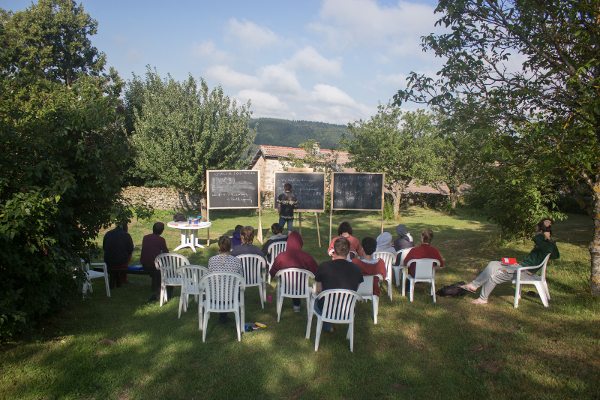
|
|
|
CoursesThe two-fold role of observables in Classical and Quantum Kinematics
In this course, we will explore some of the mathematical structures underlying the kinematical description of classical and quantum systems. As we get familiar with the geometry of the space of states and the algebraic structures of observables, we will try to understand the conceptual meaning of these structures: why is it the case that the space of states of classical or quantum systems is a symplectic manifold? Why do complex numbers play a more prominent role in the formulation of quantum mechanics?
During this promenade, I will emphasise the striking similarities between the classical and quantum worlds. In fact, from the kinematical point of view, it will be clear that they share much more than is usually stressed. Hopefully, this common language will allow us to pinpoint more precisely the meaning of the structural differences between the two sides of the walkway.
Some bibliography for the valiant reader:
____________________________________________________________________________________
Timeless statistical mechanics and applications to quantum gravity
Constrained dynamical systems are notoriously well-known for their absence of notions of absolute time and energy. To formulate a statistical mechanical framework in these settings is an open problem. In this course, we will discuss the issue of characterising statistical equilibrium in background independent systems, first for spacetime relativistic systems and then for a candidate quantum gravity system of spin networks devoid of any spacetime structures. In this context we will explore topics like: the problem of time; the thermal time hypothesis; presymplectic mechanics; the maximum entropy principle and the Kubo-Martin-Schwinger condition; and applications to statistical mechanics of quanta of geometry.
References:
https://iopscience.iop.org/article/10.1088/0264-9381/11/12/007
https://doi.org/10.1088/0264-9381/10/8/015
http://arxiv.org/abs/arXiv:1801.09964
____________________________________________________________________________________
Cosmological field theories
Historically, classical/quantum field theory has enjoyed much success in describing condensed matter and particle physics. As a result, most introductions to the subject focus on these regimes. However, the language of field theory is far more powerful. Recent advances in cosmology have allowed us to build accurate field theory descriptions of virtually every stage of our Universe's evolution: describing inflation in the early Universe, the subsequent growth of large scale structures, and the late-time domination of dark energy.
____________________________________________________________________________________
Fun and Games with the Choi-Jamiolkowski Isomorphism
The Choi-Jamiolkowski isomorphism is a remarkable mathematical correspondence between quantum channels and entangled bipartite states. This mathematical trick has a range of important uses in quantum information theory and has also played a part in a number of recent `operational' reformulations of quantum mechanics. However, the interpretation of the isomorphism remains a contentious issue.
References:
https://arxiv.org/abs/quant-ph/0611233
____________________________________________________________________________________
Am I a statement about the physical world? dixitque Deus fiat lux et facta est lux Genesis 1:3
My word shapes my ideas so that they can be grasped, modified, copied or discarded by my peers. Logic can formalise this process. This course is an invitation to shatter the thin border between abstract logical statements and concrete physical systems. I see it as a three-step journey. First, we'll discover the joy of formal reasoning through sequent calculus from classical to linear logic. Then, we'll explore the incarnation of those abstract systems into the quantum realm. Finally, we will attempt to reconstruct quantum mechanics in this setting. Additional optional time will be dedicated to the fine art of quantum pictorialism.
Objectives: at the end of the course attendee should be able to:
Things one can look at as an appetizer (by decreasing order of physicist friendliness):
Towards a more efficient model of particle physics
Grand unified theories envision the standard model of particle physics as a piece of a larger system. However, in these lectures we will ask the opposite question: Could the standard model result from a set of algebras much smaller than itself? By the late 1930s, Arthur Conway knew that the complex quaternions (just a 4 complex-dimensional algebra) could single-handedly encode the notion of rotations and boosts, in addition to the degrees of freedom of electric and magnetic fields, energy and momentum, fermionic spin and chirality. Here we will demonstrate hints that the octonions might be capable of similar feats in efficiency.
|


